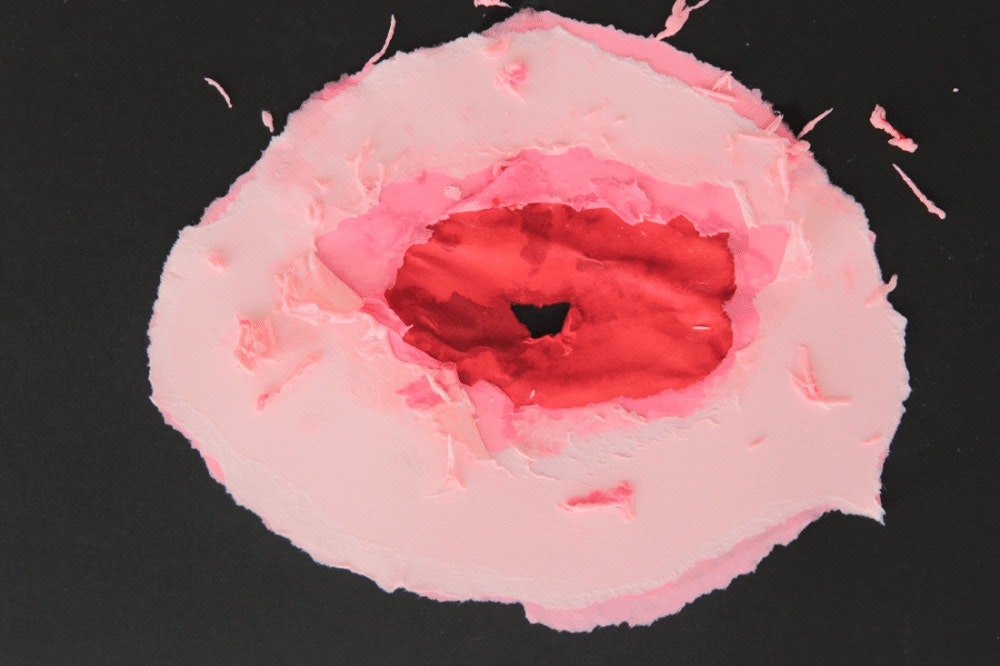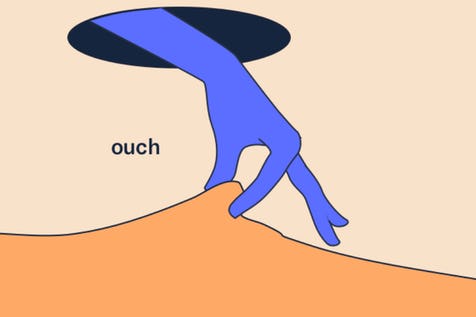Have you ever heard of Premenstrual Dysphoric Disorder, or PMDD for short? It’s understood that PMDD affects 5-8% of women (1) of reproductive age worldwide yet it’s commonly left undiagnosed or dismissed as PMS. PMDD is a very serious hormone-based mood disorder that affects women’s mental health and personal lives in severe and debilitating ways. Research shows that women with PMDD will respond in extreme and often anxiety-inducing ways to the natural hormonal changes that rise and fall throughout the menstrual cycle.
One of the most studied pathways for this disorder include the body’s altered sensitivity to allopregnanolone, a derivative form of progesterone synthesized in the brain. Under physiological conditions, allopregnanolone acts on a brain level promoting relaxation. However, in PMDD, when the level of allopregnanolone increases, it leads to elevated moods or anxiety symptoms (2); the impact of which is felt more particularly during the luteal phase (the days after ovulation and before menstrual bleeding), when the level of progesterone produced is at its highest(3). For a woman with PMDD, she may feel a heightened sense of anxiety, tiredness, lack of concentration, and suicidal thoughts amongst many other severe side effects during this time (4).
In 2019, PMDD was listed in the appendix of the Diagnostic and Statistical Manual of Mental Disorders, and recognised in its own right under depressive disorders (5). Prior to this point, very little had been researched about the condition, and many doctors were sceptical of its legitimacy. Over a year ago, Laura was diagnosed with PMDD having spent two decades swinging between crippling depression and extreme happiness on a rotating fortnightly basis. Going undiagnosed since starting puberty at the age of 9, and left to question if she was bipolar as she got older, Laura has invested time and energy into unpicking her disorder and reflecting on PMDD’s side effects. Laura offered to share her story with us, discussing the ups and downs of managing PMDD through self awareness.
I continued to beat myself up; thinking I simply wasn’t as strong as all my female friends who seemed unaffected by their cycle!”
Hi Laura, could you talk to us about what it’s like living with PMDD?
Living with PMDD is a roller-coaster ride, swinging between these ups and downs every two weeks is exhausting not only for yourself but the people around you. About 2 years ago I started mapping my mood by putting an ‘x’ in my diary on the days that I felt low and a ‘tick’ on the days I felt happy. In the space of 3 months I found that for roughly 14 days of every month I was angry, distressed and irrational. I would feel rattled with exhaustion (I could easily sleep 15 hours, have a nap in the day and still feel shattered), and overwhelmed by a sense of hopelessness. This was a far cry from the person I identify as during the rest of the month.
Although I’d managed to find the link between the ups and downs, there wasn’t any accessible information on PMDD for me to really understand the reasons for these fluctuations. I continued to beat myself up; thinking I simply wasn’t as strong as all my female friends who seemed unaffected by their cycle! Little did I know that this mindset was reducing my self esteem, continuing to impact my relationships and my career. Only recently on having my PMDD diagnosed have I managed to understand what I need and how I can take control of my situation.
How has PMDD impacted your career?
Massively; for two weeks of every month I was firing at all cylinders, then the following two weeks I’d be vacant and struggle to retain attention. At work, I was finding that on my low days, when my boss asked me to do the simplest of tasks (something that would typically take five minutes), it would take me two hours or I might not even be able to do it at all.
Interestingly, it was my first boss back in 2010, who picked up on a pattern in my shifting temperament. He sat me down and said ‘You’re one of the most impressive teenagers I know but you’re only impressive for two weeks of the month. The other two weeks it’s as if you’re not here, you don’t have that spark about you’.
And did it affect your relationships with people?
During the bad days, I would feel so low that even when surrounded by the people I know, love and who make me feel safe, I would be unable to hold conversations, nothing made me laugh and I’d feel so out of place that I’d inevitably make my excuse and leave or disappear without even saying goodbye.
I’d find my sex drive would vanish, my appetite would sky rocket and I’d just want to sleep all day. Then suddenly I’d transition into feeling elated, loved up and like I could take on the world. When in relationships, and prior to understanding my PMDD, I’d often blame this turbulent unhappiness/happiness on my partners and it burdened our relationships. I hold my hands up, I don’t know how people have stuck around.
“Only recently on having my PMDD diagnosed have I managed to understand what I need and how I can take control of my situation.”
What’s been your experience with visiting medical experts about your condition?
It was back in 2010 that I first visited the doctor about my condition and he diagnosed me with depression and prescribed antidepressants. Due to being so young and not feeling overly comfortable with the diagnosis, I reclined the option. Despite my efforts to downplay the impact my erratic mood swings were having, they still continued. Due to the lack of information about PMDD at the time, I found myself identifying with the symptoms of bipolar.
It wasn’t until late 2018 when I stumbled across an article which explained typical symptoms of PMDD, all of which I found myself resonating with. I went back to the doctor, told him everything I knew, presented my mapped cycle and he agreed that I most likely had PMDD. Once again I was prescribed antidepressants and told there was no other PMDD specific treatment on offer. Having moved countries, started a new job and changed flat shares, I was very fearful of underperforming, both in my job and socially so I reluctantly took the prescription. Although this had immediate effects on my mood, I felt numbed, almost like an imposter in my own body.
Since coming off antidepressant in July 2019 and doing even more research, I have now invested in a private doctor who specialises in gynaecology and Hormonal replacement therapy, and can happily say my life has changed dramatically! I rarely find myself getting overwhelmed, tired or irrational anymore and I’m able to process the pressures of adult life with much greater ease. I’m still a sensitive person, but I don’t have the extremes. I have more energy, a clear and less aggressive mind, stronger personal relationships and I’ve even progressed in my career.
What advice would you give to anyone who may be suffering from PMDD symptoms?
I can’t emphasize enough how important tracking your cycle is! Everyone’s symptoms and patterns of behaviour are different so by tuning in with your cycle you’re able to prepare yourself for these peaks and troths. It could be as simple as knowing when to say yes or no to a night out or taking on a major project at work.
Personally, I like to make sure I’ve done a proper food shop and meal plan ahead of the weeks when I feel low because cooking myself a delicious breakfast tends to make me feel a bit better. I don’t punish myself in the ways I did prior to understanding PMDD; if I’m not performing to the same capacity that I’m typically used to, instead of getting frustrated, I’ll focus on breaking the task down into smaller, more manageable pieces. I find that during my low periods of PMDD, I tend to get angry and stressed very easily so yoga and meditation are great practices to calm myself. Breathing techniques are also helpful.
In general, it’s very important to accept the ebbs and flows of these cyclical hormones. Don’t punish yourself! And remember, there is a solution.
Interview conducted and edited by Bethany Burgoyne.
References
1. Sanskriti Mishra; Raman Marwah, Premenstrual Dysphoric Disorder, 2020, article consulted on May 18th, 2020. Available from:
2. Teresa Lanza di Scalea, Teri Pearlstein, Premenstrual Dysphoric Disorder, the Psychiatric Clinics of North America, 2017, Volume 40, Issue 2
3. Torbjörn Bäckström, Lotta Andréen, Inger Björn, Inga-Maj Johansson, and Magnus Löfgren, The Premenstrual Syndromes, 2007, Chapter 13: The role of progesterone and GABA in PMS/PMDD, page 117 to 120
4. Epperson, C. N., Steiner, M., Hartlage, S. A., Eriksson, E., Schmidt, P. J., Jones, I., & Yonkers, K. A., Premenstrual dysphoric disorder: evidence for a new category for DSM-5., 2012, American Journal of Psychiatry, 169(5), page 465 to 475
5. Deborah R. Kim, Kathryn A. Czarkowski, and C. Neill Epperson, The Relationship Between Bipolar Disorder, Seasonality, and Premenstrual Symptoms, 2011, Current Psychiatry Rep 13, page 500 to 503




